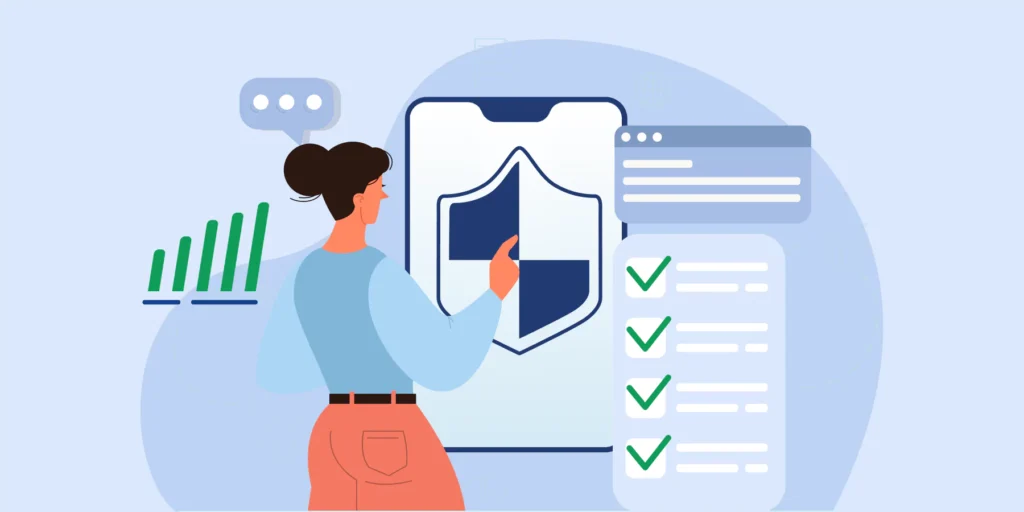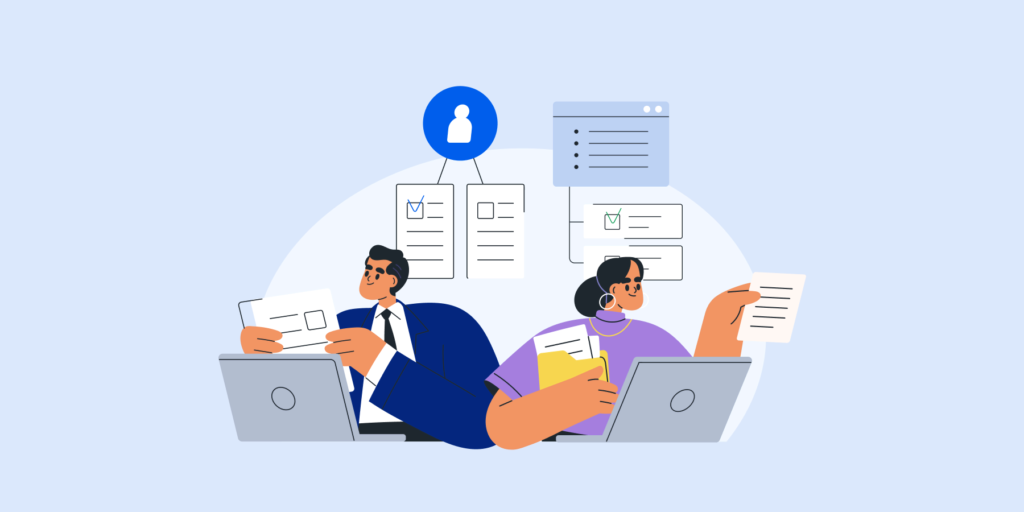Imagine your Google Workspace as a bustling marketplace, where each user’s space is filled with valuable goods (data). As time passes, some stalls become abandoned (AU accounts), yet the cost of their rent (license costs) continues to drain your resources. This is all in the name of compliance and maintaining operational readiness. However, relocating these goods to a more cost-effective storage area doesn’t have to disrupt your marketplace’s efficiency.
GAT Labs offers a streamlined solution that efficiently moves your valuable goods to a cost-effective location, ensuring you meet your compliance obligations and maintain operational readiness, all while significantly reducing the overheads associated with Google Workspace AU licenses. Opting for our solution means direct savings on your license costs, focusing on smart resource management to keep your marketplace vibrant and cost-effective.
The Imperative of Retaining Leavers’ Data
Retaining leavers’ data, including AU accounts, is more than a compliance requirement; it’s a strategic asset for many organizations. From safeguarding intellectual property to ensuring a smooth transition during workforce changes, the reasons for holding onto former employees’ data are both varied and critical.
Regulations like GDPR and CCPA advocate for data minimization, urging organizations to retain only what’s essential. Excessive archived data not only bloats your digital estate but also heightens the risk of non-compliance, potentially inviting severe financial penalties.
However, while the necessity to manage AU accounts effectively is clear, the traditional approach within Google Workspace can be financially challenging. Here, GAT Labs steps in to offer a cost-effective, secure solution for managing leavers’ data, including AU accounts, ensuring organizations can uphold their data retention needs without prohibitive costs.
Finding the Right Balance
Costs, Compliance, and Productivity
Historically, Google Workspace made retaining leavers’ data manageable and cost-effective with Vault for Former Employee (VFE) licenses at no additional cost. This arrangement ensured that leavers’ data remained accessible in Google Vault for compliance and investigative purposes, with shared Drive files remaining available.
However, the deprecation of VFE licenses in favor of Archive User licenses introduced new costs, compelling organizations to reassess their data retention strategies.
Let’s explore the available options and their implications:
| PROS: | CONS: | |
|---|---|---|
| 1. Delete leavers account and data | – 0 new license costs, only pay for active users | – Impact users that access the leaver’s Drive files. – Cannot audit original data from Google Vault. – Not able to meet compliance requirements. |
2. Export leaver’s data and delete account | – 0 new license costs, only pay for active users – Compliance requirements met (albeit difficult to audit) | – Impact users that access the leaver’s Drive files. – Cannot audit original data from Google Vault. – High amount of manual admin effort. – Exporting the data from Workspace introduces risk of data loss or exposure. – Depending on where you choose to store the exported data, it could incur new storage and maintenance costs |
| 3. Transfer leaver’s data to another user and delete account | – Retain leaver’s data, without the need to pay for AU licenses. | – No granular control natively, transfer everything or nothing. This can lead to users gaining access to sensitive files they should not have access to. – Difficult to selectively update sharing permissions when required, without the use of 3rd party tools like GAT |
| 4. Transfer leaver’s data to Shared Drives and delete account | – Retains leaver’s data, without the need to pay for AU licenses. | – Not possible natively. – Manually managing this method would be a very high-effort task. |
Some customers chose to delete leaver data due to the additional costs involved. In some cases, they assessed the data as no longer necessary. However, not all organizations have the luxury of this choice. For instance, financial services organizations are often bound by strict data retention regulations.
Options 3 & 4 are theoretically ideal for managing Archived User (AU) accounts. Nevertheless, their practical application can be challenging due to the manual effort involved, potentially impacting larger organizations or those with high turnover rates significantly.
When “Delete” Isn’t an Option
Simply hitting “delete” on an Archived User (AU) account might seem like a straightforward fix, but this action permanently removes all associated data. This includes Google Drive files owned by the archived user that might still be in active use within your organization. Moreover, deleting a user means losing valuable historical records and evidence that could be crucial for legal or regulatory obligations.
This dilemma underscores the unique value GAT Labs brings to your data management strategy, offering the best of both worlds. With GAT Labs, you can preserve all your Archived User data, ensuring your organization’s productivity and investigative capabilities through Google Vault remain unaffected.
Google Vault facilitates selective data retention from AU accounts. This allows you to keep essential emails or documents while avoiding the unnecessary costs associated with storing redundant data. Imagine meticulously organizing the stalls of your digital marketplace, safeguarding valuable merchandise that holds historical or operational significance, while clearing out the obsolete items no longer serving your business needs.

Tailoring AU Account Management with GAT Lab
A one-size-fits-all strategy doesn’t work for managing AU accounts. GAT Labs empowers you with:
- – Filter Leaver Accounts: GAT+ simplifies the identification of inactive accounts that are costing your organization money on an ongoing basis. By using GAT+ you can filter for last login time, suspended, or users who have an Archived User license assigned.
- – Take Bulk Actions: GAT Flow facilitates the bulk offboarding of leaver accounts by importing a list of users from a Google Sheet. You can easily move their data to a Shared Drive or a centralized ‘Archive” user. This means that instead of paying for 100 licenses for 100 leavers, you could reduce this to 1 license or even 0 if you migrate to Shared Drives.
- – Ownership Change: GAT Unlock empowers admins to change the ownership of Google Drive files and folders from active and suspended accounts, at a granular level. By doing so, you can easily change ownership of specific files and move the rest of the leaver’s data to a central archive (user account or Shared Drive). This ensures no critical data is lost when a user is offboarded.
- – Customizable File Management: GAT Unlock offers flexible options to move files to a new owner’s MyDrive. It allows you to deny access to the old owner, untrash files if necessary, and as well as change ownership we can also move the file location to another user’s MyDrive. This supports a comprehensive data management strategy, covering all the scenarios that admins might face when managing leavers’ data.
- – Workflow Management: Create workflows for onboarding, offboarding, or modifying user accounts with GAT Flow. Simplify the license management process, optimizing costs by ensuring that only active users have assigned licenses. By doins so, it helps to prevent Archive User licenses from becoming a growing cost for your organization.
In a Nutshell
GAT Labs enables Google Workspace admins to significantly cut costs on Workspace licenses without compromising operational efficiency or compliance. By efficiently managing leavers’ data, moving it to Shared Drives, or centralizing it, you streamline license management and reduce administrative efforts.
Your digital attic filled with archived user accounts doesn’t have to be a financial burden. With strategic planning and sophisticated tools from GAT Labs, you can transform this overlooked expense into an automated, cost-effective process.
Let GAT Labs guide you in turning this potential challenge into a compliant and insightful component of your digital estate. Schedule a demo today to learn more about optimizing your Google Workspace environment.
Insights That Matter. In Your Inbox.
Join our newsletter for practical tips on managing, securing, and getting the most out of Google Workspace, designed with Admins and IT teams in mind.






